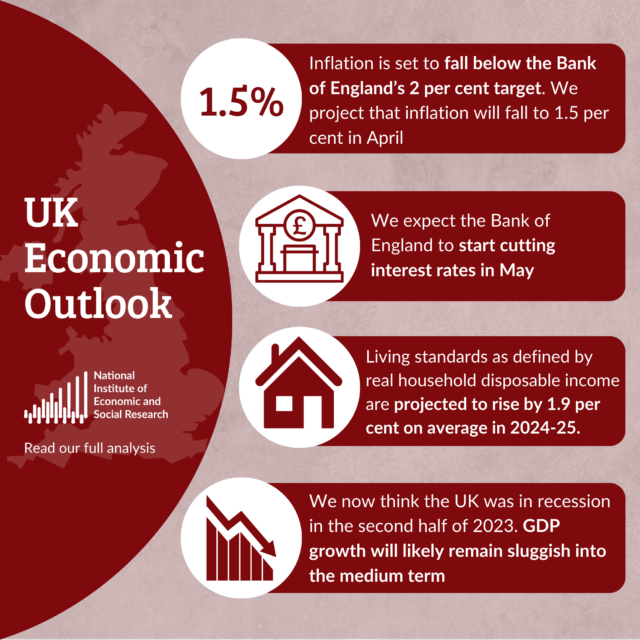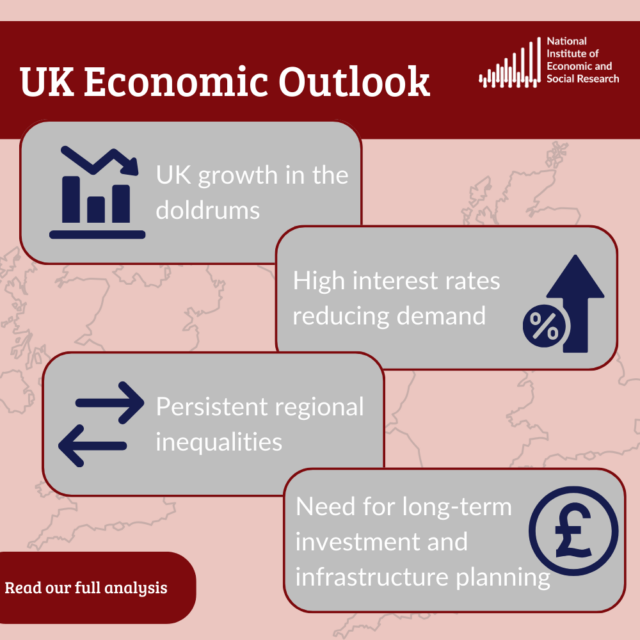Mind the Gap: Productivity in the UK’s Low-Wage Sectors
The past few months have been difficult for some of the UK’s largest low-paying sectors, with frequent news stories telling of squeezed profits and store closures among high street retailers and restaurant chains. In retail, the ‘bricks and mortar’ outlets are locked in a ‘survival-of-the-fittest’ battle with online competitors, whilst restaurants are suffering from a decline in spending on leisure activities due to inflation and stagnant wages. Last week’s rise in the National Minimum Wage and National Living Wage rates will only add to the challenges.
The past few months have been difficult for some of the UK’s largest low-paying sectors, with frequent news stories telling of squeezed profits and store closures among high street retailers and restaurant chains. In retail, the ‘bricks and mortar’ outlets are locked in a ‘survival-of-the-fittest’ battle with online competitors, whilst restaurants are suffering from a decline in spending on leisure activities due to inflation and stagnant wages. Last week’s rise in the National Minimum Wage and National Living Wage rates will only add to the challenges.
One route to greater competitiveness in these sectors lies in strategies to increase productivity. The government’s flagship Industrial Strategy recognises that ‘some of the biggest opportunities for raising productivity’ come from low-wage, high-employment sectors, and promises to develop sector deals for industries such as retail and hospitality. Such deals are seen as one means of raising the level of productivity in the UK a whole, thereby helping to close the gap with its major competitors: a gap which sees UK workers produce less per hour than their counterparts in France, Germany and the US.
In recent work for the Joseph Rowntree Foundation, we have undertaken a comprehensive analysis of the productivity performance of the UK’s low-wage sectors, with a particular focus on the role that they play in the UK’s productivity gap with other countries. We focus on the ten industry sectors in the UK where at least one-quarter of the workforce are low-paid (that is, having gross hourly earnings below two-thirds of the UK median wage) – see Table 1 below.
As one would expect, most of these sectors have levels of productivity that are either at/below the level of productivity in the UK as a whole. However, our primary interest is in their performance in comparison with the same sectors in other major economies, and their contribution to the UK’s overall productivity gap with those countries.
How do levels of productivity in the UK’s low-wage sectors compare with other countries?
When we group these sectors together, we find that aggregate productivity in the low-paid part of the UK economy is 20-30% below that found in Germany, France, the Netherlands and the US. Among our ten comparator countries, only Italy has levels of value-added per hour below that of the UK (see Figure 1 below). This is not to say that the UK’s productivity problem is restricted to low-wage sectors. In fact, we find that the UK’s relative position is slightly better, on average, in the low-wage portion of the economy than it is among higher-wage industries. But closing the UK’s productivity gap with its competitors in low-wage sectors would make a substantial contribution towards overcoming the national productivity problem. Our analysis indicates that raising productivity in low-wage sectors to the levels found in Germany, France and the Netherlands would close between a fifth and a quarter of our national productivity gap with these countries (see Table 2).
This picture hides a considerable degree of variation between the ten sectors. For instance, the level of productivity in the UK retail sector lags the US by around 40% but sits broadly on a par with levels of retail productivity in France and the Netherlands, and above that found in Germany. In the hospitality sector, however, productivity is around 10% higher in the US and Germany and around 45% higher in France than it is in the UK. The problem for the UK is that, when we look at recent rates of productivity growth in these sectors, we find that the UK is not closing these gaps to any appreciable degree.
How can the UK close the gap with the productivity leaders?
To understand the reasons for the UK’s productivity gap in low-wage sectors more fully, we used a standard productivity-accounting approach to decompose the gap in each sector into the contributions from cross-country differences in capital intensity, labour quality and total factor productivity (TFP). Whilst the relative contribution of these three components varies by sector and country, the general finding is that any weakness in productivity in the UK’s low-wage sectors is primarily due to differences in TFP, followed by differences in labour quality, with differences in capital intensity playing a more minor role. Three industry-by-country comparisons serve to illustrate this general point (see Figure 2).
These TFP differences could be influenced by a range of factors, but our analysis across a range of sectors and countries indicates that what happens within firms could be particularly important. When we looked at the UK’s relative TFP position across a wide range of sectors, we found that countries were more likely to have a TFP lead over the UK in cases where they: had a higher proportion of workers in training; had more extensive use of management practices such as performance-related pay; had a higher share of employees using ICT; and had a lower share of employees on temporary contracts.
This emphasis on the internal organisation of firms chimes with other NIESR work. A recent NIESR discussion paper by John Forth and Alex Bryson showed that better management practices improve performance in SMEs (small and medium-sized enterprises), which tend to form a key part of many low-wage sectors. Other NIESR work by Rebecca Riley and Chiara Rosazza-Bondibene has shown that increased labour costs – which might ‘shock’ managers into organisational improvements – can also lead to improved productivity.
Despite some people’s expectations, the recent increases in the National Minimum Wage and National Living Wage may actually benefit low-wage sectors in the long-run.
‘Productivity in the UK’s Low-Wage Industries: A Comparative Cross-Country Analysis’ by John Forth and Ana Rincon-Aznar was funded by the Joseph Rowntree Foundation as part of their broader program of work on productivity strategies for low-wage sectors. You can read the whole report here.






















